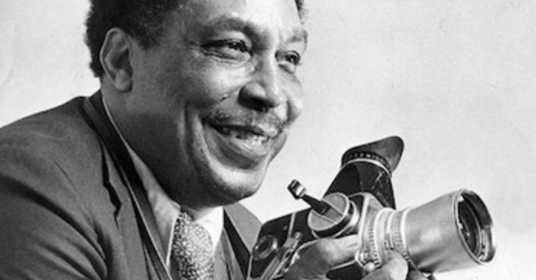The hearts of veterans of the civil rights community broke this week when the Memphis Commercial Appeal reported that Ernest Withers, the photographer who created some of the lasting images of the movement, was a paid informant for the FBI.
Withers took some of the pictures that we remember most about that long-ago but still-present era when blacks struggled to break the back of a terrorist state and win their full rights as citizens. They marched and got beaten by mobs and cops. They signed up to vote and they lost their jobs and homes. They sang and they got thrown into jail. They spoke up and their churches and homes got shot at and burned.
Withers documented the trial in the Emmett Till case in 1955 and the planning for the Poor People’s March in 1968. He took pictures of Martin Luther King marching, riding a bus in Montgomery after the boycott, relaxing behind closed doors before his death. He took the iconic picture of sanitation workers marching in Memphis, bearing the signs “I Am A Man,” in the days before King’s assassination. He recorded demonstrations all over. He took pictures of those quintessential American institutions, jazz and baseball, which gave expression to black aspirations even while holding blacks down.
And now, after combing documents obtained through the Freedom of Information Act and matching reports of an informant named in FBI files as ME 338-R with a memo matching Withers to that tag, the Commercial Appeal reveals that Withers gave the FBI hounds information that J. Edgar Hoover and his henchmen could use to disrupt the civil rights and peace movements. The period of Withers’s activity is not clear; so far it looks like Withers worked for the FBI from 1968 to 1970.
The icons of the civil rights movement deserve to feel betrayed. They were battling a deadly enemy with little more than their bodies, minds, and souls. The FBI and its allies drew from the deep pockets of the federal government and private hatepreneurs. Withers’s information could have resulted in dire consequences for the friends he named. Some might have lost jobs and homes, got hit with audits and smear campaigns, the whole COINTELPRO bag of tricks.
So what Ernest Withers did was wrong, a terrible betrayal of the people who loved him and brought them into the most intimate places and moments.
But in researching my book Nobody Turn Me Around: A People’s History of the 1963 March on Washington, I heard stories that might lend a broader perspective on this betrayal.
I got lots of files from the FBI, many recycled from previous FOIA requests. It was obvious that the FBI was getting its agents into all kinds of church meetings and activist groups. And of course the FBI was tapping the phones of major figures not just in civl rights but all over politics and the arts. Someone had to be sitting in those meetings and taking notes. Some of them had to blend in with the crowd.
And the people in the movement knew it. The civil rights activists of the day sometimes laughed about who was in the meeting to snitch. Sometimes they knew, sometimes they didn’t. But as many told me, they didn’t care. What they were doing was righteous and open for all to see. The element of surprise sometimes played a role, but careful planning and discipline were more important. When surprises happened, the leaders were often the most surprised of all. The “dash for freedom” in the Birmingham campaign is just one example.
A man named Julius Hobson, who was active in Washington politics, sat in all the meetings to arrange for security at the March on Washington. The minutes of these meetings show that Hobson was excited about the toys of the security detail. He talked constantly about walkie-talkies and command hierarchies. He wanted to be in the middle of it all, even though Bayard Rustin, the brilliant march organizer, had recruited and trained black cops from New York to keep the peace using nonviolent means. And the Washington police and federal security officers were involved too. Years later, after Hobson died, FBI documents showed that he too was an informant.
Friends defended Hobson, saying he was undoubtedly feeding false information to Hoover & Co. Maybe yes, maybe no. We’ll never know.
We won’t ever know the full story of Ernest Withers either. Did he just need the money? Did he get framed? Did he want to rat on the Invaders, a Black Panther-style group on the rise in Memphis? Was he trying to deke the feds? Was he confused? Was he targeting enemies and promoting friends? Some of the above? All of the above?
The civil rights movement was the transcendent moment of our time. A vast community of people from all over — ministers and housewives and students, factory workers and sharecroppers and garbage men, teachers and artists and the unemployed — embraced a strategy of nonviolence and love to confront a vicious and corrupt system of racism. They won, not just for themselves but for all of us and all the world.
Part of what’s so amazing — and so profoundly moving — is that they were just ordinary people. They were not superhuman. They were courageous but also scared. They made mistakes, lots of them. They got sloppy and sometimes selfish and even ornery. But they rose above their flaws and transformed a nation, and that’s one of most beautiful things you can say. And no FBI file will ever change that.


